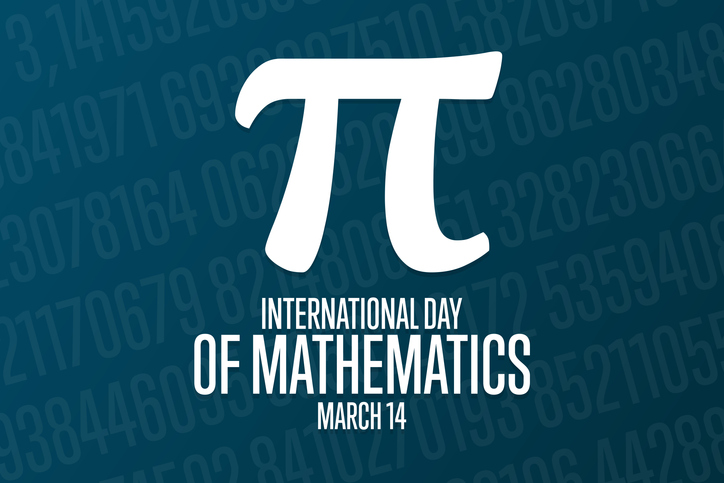
March 14 is the annual celebration of math held each year on Pi (π) Day. It’s a fun play on numbers because 3.14 represents Pi, the first three digits of the ratio of a circle’s circumference to its diameter. Many jobs use math. In honor of Pi Day, we’re highlighting math-related occupations. Data from the U.S. Bureau of Labor Statistics verify that math is prime in these jobs: their median annual wage is greater than $41,950—the median wage for all workers in 2020--and they are expected to grow faster than the average for all occupations (7.7%) from 2020 to 2030. As businesses and government agencies continue to rely on big data to improve their planning and decision-making, math occupations provide critical statistical analyses. If you’re considering a career involving math, check out these 10 careers:
Actuaries
How they use math: Actuaries use calculus and statistics to estimate probability, economic costs of future events and other calculations.
2020 annual median pay: $111,030
Typical entry-level education: Bachelor's degree
Number of jobs, 2020: 27,700
Projected growth, 2020–2030: 24% (much faster than average)
Occupational openings, 2020–2030 annual average: 2,400
Computer and information research scientists
How they use math: Computer and information research scientists work with algorithms—sets of instructions that tell a computer what to do—to create and improve software.
2020 annual median pay: $126,830
Typical entry-level education: Master’s degree
Number of jobs, 2020: 33,000
Projected growth, 2020–2030: 22% (much faster than average)
Occupational openings, 2020–2030 annual average: 3,200
Data scientists and other mathematical science occupations
How they use math: Data scientists and other mathematical science occupations, such as bioinformatics technicians, analyze raw data to interpret and report information.
2020 annual median pay: $98,230
Typical entry-level education: Bachelor’s degree
Number of jobs, 2020: 63,200
Projected growth, 2020–2030: 31% (much faster than average)
Occupational openings, 2020–2030 annual average: 7,100
Financial examiners
How they use math: Financial examiners make calculations and monitor balance sheets to ensure that financial institutions have cash available.
2020 annual median pay: $81,430
Typical entry-level education: Bachelor’s degree
Number of jobs, 2020: 70,800
Projected growth, 2020–2030: 18% (much faster than average)
Occupational openings, 2020–2030 annual average: 6,900
Information security analysts
How they use math: Information security analysts protect networks and systems by working with math-based concepts in computer coding, programming and encryption.
2020 annual median pay: $103,590
Typical entry-level education: Bachelor’s degree
Number of jobs, 2020: 141,200
Projected growth, 2020–2030: 33% (much faster than average)
Occupational openings, 2020–2030 annual average: 16,300
Logisticians
How they use math: Logisticians use algebraic equations to analyze supply-chain activities, such as purchasing, transportation, inventory and warehousing.
2020 annual median pay: $76,270
Typical entry-level education: Bachelor’s degree
Number of jobs, 2020: 191,000
Projected growth, 2020–2030: 30% (much faster than average)
Occupational openings, 2020–2030 annual average: 24,500
Market research analysts
This occupation includes market research analysts and marketing specialists
How they use math: Market research analysts interpret data on sales and trends to help a company promote existing and future products or services.
2020 annual median pay: $65,810
Typical entry-level education: Bachelor’s degree
Number of jobs, 2020: 740,900
Projected growth, 2020–2030: 22% (much faster than average)
Occupational openings, 2020–2030 annual average: 96,000
Operations research analysts
How they use math: Operations research analysts rely on statistics, calculus and algebra to help organizations solve problems and improve decision-making.
2020 annual median pay: $86,200
Typical entry-level education: Bachelor's degree
Number of jobs, 2020: 104,100
Projected growth, 2020–2030: 25% (much faster than average)
Occupational openings, 2020–2030 annual average: 10,200
Software developers and software quality assurance analysts and testers
How they use math: Software developers, quality assurance analysts and testers use mathematical models to create computer software and to identify and fix defects.
2020 annual median pay: $110,140
Typical entry-level education: Bachelor’s degree
Number of jobs, 2020: 1,847,900
Projected growth, 2020–2030: 22% (much faster than average)
Occupational openings, 2020–2030 annual average: 189,200
Statisticians
How they use math: Statisticians apply principles, such as algebra, calculus and probability to design surveys and interpret data.
2020 annual median pay: $92,270
Typical entry-level education: Master's degree
Number of jobs, 2020: 42,000
Projected growth, 2020–2030: 35% (much faster than average)
Occupational openings, 2020–2030 annual average: 5,000
These occupations aren’t the only ones in which math has value. Math ability is important in a variety of other careers, including those in business and financial, construction and science occupations. You can explore these, and hundreds of other occupations, in the Occupational Outlook Handbook.
Additionally, the Occupational Outlook Handbook field of degree pages highlight information from the U.S. Bureau of Labor Statistics and the U.S. Census Bureau on a variety of different fields, including mathematics.
Kathleen Green and Emily Krutsch are economists in the U.S. Bureau of Labor Statistics. Follow BLS on Twitter at @BLS_gov.

 U.S. Department of Labor Blog
U.S. Department of Labor Blog

